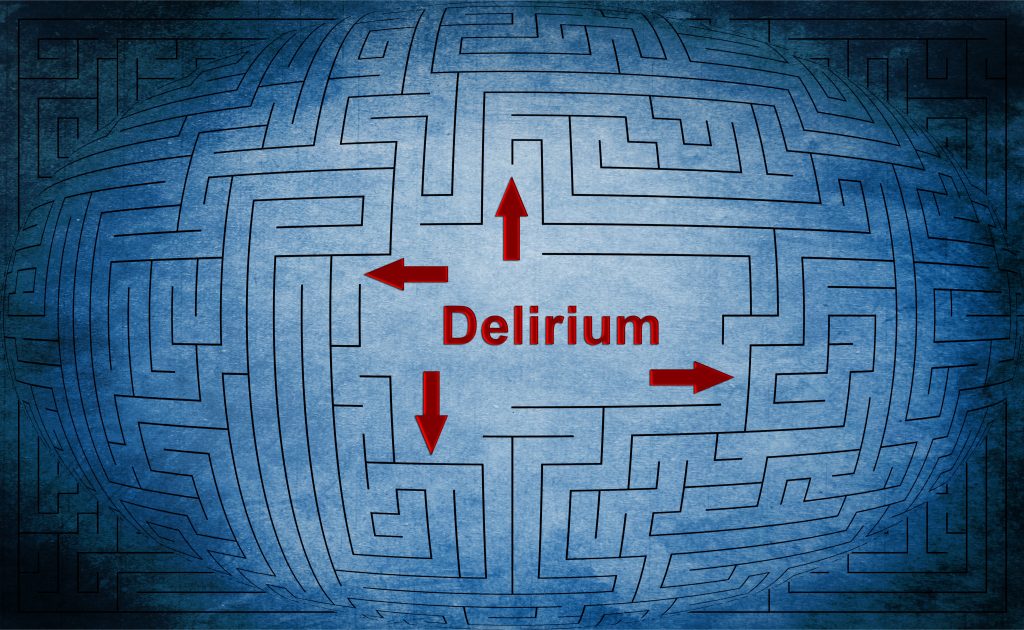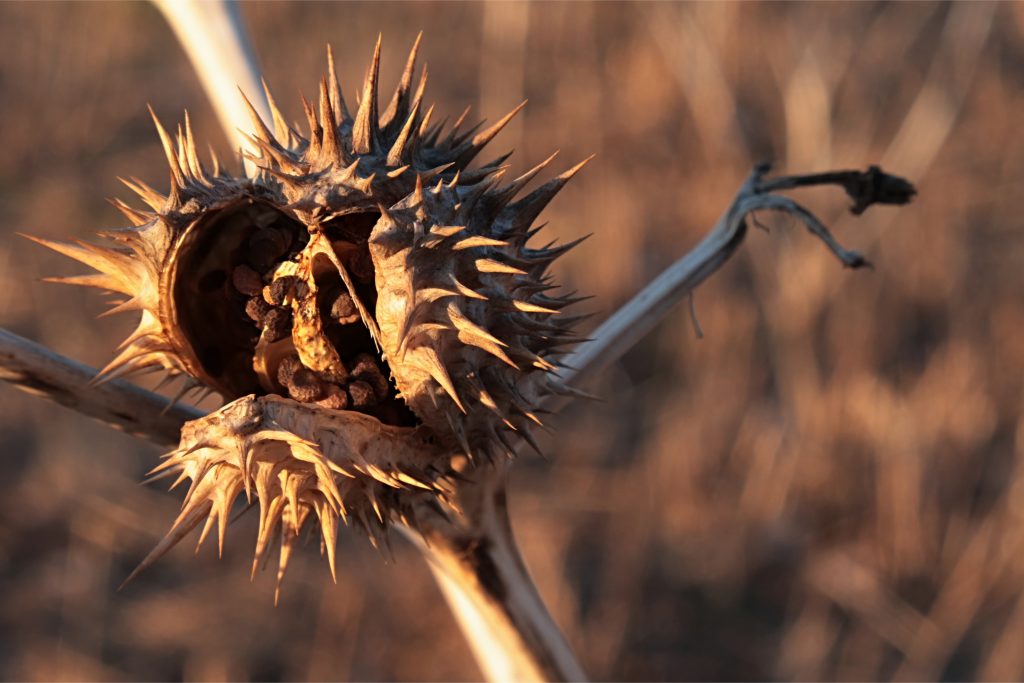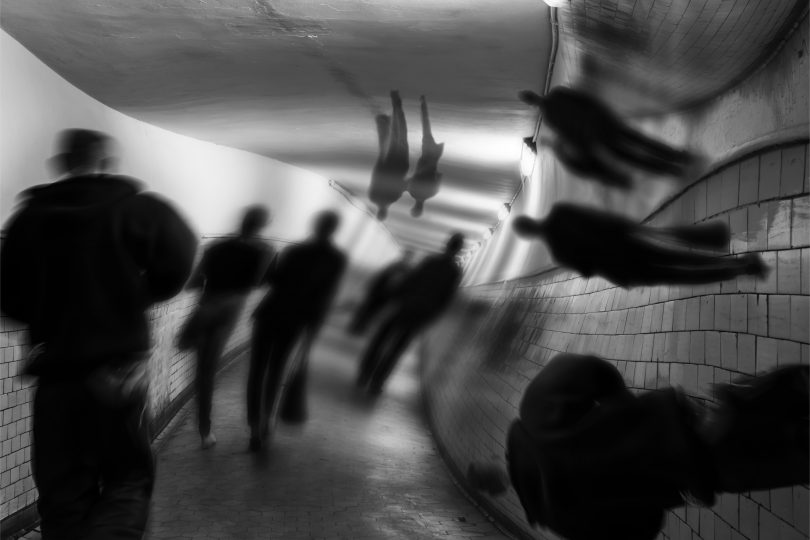Much like with cannabis, which can be organized into groups like high-THC weed or high-CBD weed, hallucinogen drugs also have their own categories. Psychedelics and hallucinogens are often thought of synonymously, but this is not the case, and hallucinogens are broken down into three group. Psychedelics and dissociatives are the first two, and the third grouping is called ‘deliriant hallucinogens’. How do these differ from other hallucinogens, and where can we find them in life?
Deliriant hallucinogens represent the most non-interesting hallucinogens for recreational use today, but are steeped in a rich history worldwide, and are used commonly in medicine. We’re an independent publication specializing in cannabis and psychedelics news. You can keep up with everything going on by subscribing to The Cannadelics Weekly Newsletter, which will also put you in first place for new product promotions, as soon as they are available to the public.
Deliriant hallucinogens
So, what are these deliriant hallucinogens, and how do they vary from the standard hallucinogens like LSD and psilocybin, which we know and love? Though deliriants cause a form of hallucination, they are more associated with bringing on delirium, which is an abrupt change that causes mental and emotional confusion and disruption. Deliriants can therefore make concentrating, remembering things, and sleeping, very difficult to do. Dementia patients are known to suffer from delirium, as are those withdrawing from alcohol, or coming out of anesthesia.
Deliriants are under the heading of hallucinogens, and they do produce hallucinations of a sort. When this happens, the hallucinations tend to integrate well into consciousness, like a fully formed dream. Psychedelics like LSD or DMT progress in levels, leading to an all-encompassing and extreme hallucination. To put it more clearly, the deliriants create hallucinations that make sense with regular life, whereas psychedelics create hallucinations that are in an over-the-top, and out-of-this-world way.
Deliriant hallucinogens are not serotonergic like psychedelics, meaning their main mode of action is not on serotonin receptors. Instead, they effect a different neurotransmitter, acetylcholine, and work as antagonists at acetylcholine receptors. This decreases acetylcholine levels, which leads to delirium, sedation, tachycardia, and the realistic hallucinations we just went over. How exactly the delirium reaction comes on is not completely flushed out.

As both cannabis and caffeine inhibit the enzyme acetylcholinesterase, which breaks down acetylcholine, deliriant users who use weed or caffeine raise their levels of acetylcholine, thereby improving cognitive function and stimulation ability. This means that both of those substances limit the effects of deliriants.
Examples of deliriants
Deliriants are found in nature, in plant genera like Datura and Brugmansia, which both contain a compound called scopolamine. Scopolamine is a tropane alkaloid and anticholinergic, which is used in medicine to treat motion sickness, and the nausea and vomiting after surgery. Other deliriant plant examples are Atropa belladonna (deadly nightshade), Hyoscyamus niger (henbane), and Mandragora officinarum (mandrake). Nutmeg is also a deliriant when eaten in large amounts, and fly agaric mushrooms, which are not standard psilocybin mushrooms, instead asserting their effects through ibotenic acid and muscimol, are considered either deliriants or hypnotics much of the time.
One of the most common deliriants in Western medicine is diphenhydramine, the active component in the allergy medicine Benadryl, which when taken in larger-than-prescribed doses, can bring on these effects. At prescribed doses, it certainly still acts as a deliriant, but without any, or as strong, hallucinations. Benadryl is an over-the-counter medication without an age restriction, meaning it’s legal for sale to anyone in the US. It comes, however, with a warning about operating heavy machinery. Because of the heavy deliriant effects, allergy medicines like Benadryl are viewed as an old-school method, while newer drugs like Allegra won’t cause the same depressant effects. Benadryl retains popularity still as an allergy medicine despite this, and as a sleep aid.
Another well-known synthetic deliriant drug is dimenhydrinate, also known as Dramamine. This is probably the most popular motion sickness drug, and is often given to people who get carsick. Dramamine is also an over-the-counter drug without a minimum age requirement.
What are all the types of hallucinogens?
As stated, there are three types of hallucinogens, for which psychedelics are just one kind. ‘Hallucinogens’ refer to psychoactive substances, and the three categories they are broken down into, are as follows: psychedelics, dissociatives, and deliriants.
Psychedelic hallucinogens are drugs like DMT, LSD, psilocybin, and mescaline. They are serotonergic drugs that produce vivid hallucinations that often involve out-of-this-world visuals, or characters that are not in line with standard reality. They are known for creating euphoria, and feelings of connection, making a person feel spiritual, and altering cognitive function. They bring on feelings of overall well-being, and illicit life-changing experiences.

Dissociatives are drugs like ketamine, PCP, and DXM. Ketamine and PCP are both drugs created for the purpose of anesthesia. They quite literally create the feeling of disassociation between parts of the brain, described, for ketamine, as “electrophysiological and functional dissociation between thalamocortical and limbic systems.” They distort sensory perceptions and make users feel disconnected from their environment and themselves. In essence they create a dreamlike state. DXM, in high doses, resembles dissociative anesthetics. The drug esketamine – a half-brother to ketamine, was legalized for medication-resistant depression in 2019. A large and growing gray market for ketamine also exists, where its used for off-label uses in pain management and to treat numerous psychological disorders.
Deliriant hallucinogens are for recreational users, the least fun. Though Benadryl is sometimes abused, its not popular in this way like drugs of either of the two previous groupings. And this is true even though medications like Benadryl are perfectly legal, as well as many of the plants that produce deliriant compounds. These drugs aren’t known for providing the same kind of euphoria and ‘fun’ of other drugs, and are not popular on a recreational scene, though they’ve certainly been popular enough throughout history, and have plenty of medical uses today.
Historical use of deliriant hallucinogens
Most plants that do things have been used in some way or another in different parts of history. Even those that are poisonous and kill, have their place, though not as a medicine, therapy agent, or recreational drug. Deliriants are found in different parts of history, for different uses.
As the story goes, deliriants were brought into Europe, and the areas around, by the Romani people, who regularly used plants like Datura, which they smoked, or orally ingested, to bring on hallucinations. Deliriants, because of their anticholinergic effects, are associated with neurodegenerative diseases like dementia, as well as causing users to experience hypoventilation and hyperthermia, to bring on feelings of dysphoria and discomfort, and sometimes to induce hallucinations which are unpleasant to the user. It’s been thought that some groups in history (particularly in hedgewitchery – earth magic) would add in other medicinal or neuroprotective plants to counteract the negative effects like feelings of dysphoria or senile behaviors.
Deliriants are seen in tons of stories in European mythology, including henbane, belladonna, mandrake, jimsonweed, and fly agaric mushrooms. Greek mythology includes plants like henbane leaves, which were made into wreaths and put on the heads of the dead so they could better forget their previous lives while making their way to the underworld. The genus name Atropa, home to belladonna, is named after the Greek Fate, Atropos.
Other stories involve an association between mandrake and the gallows where men were hung in early medieval times, henbane used in magic during Greco-Roman times, and henbane’s association with black magic in the Late Middle Ages. Also during the Middle Ages, Scopolia carniolica (henbane bell), found in Central Europe, was used to make love potions. Datura, which is still used in Latin American shamanism traditions, and for sorcery and black magic, has been employed in Mexico, South America, and the Southwestern US by indigenous cultures for hundreds of years, for ritualistic and sacred purposes.

In South America, plants of the Brugmansia genus are sometimes added to ayahuasca, as a way to take advantage of tourists by bad shamans. Good shamans refer to this as a way to steal a person’s energy and power, for which they believe each person has a limited amount. Belladonna is long associated with witchcraft, and at one point was known as an aid for the “flight of witches” which apparently brought on drunken-like behavior and hallucinations.
The genus Aconitum also known as ‘wolf’s bane’ was also heavily associated with witchcraft in European mythology, particularly with werewolves and shapeshifters. Some believe that the idea of changing into a werewolf came from wolf’s bane, which can cause paresthesia, which apparently makes a user feel like they’re covered with fur. In Greek mythology, Athena used Aconitum to turn Arachne into a spider.
Conclusion
As the world of psychedelics grows, its good to know what’s what within and around it. Though its easy to think of dissociatives and deliriants as psychedelics, its actually that all three are separate categories within hallucinogenic drugs. Deliriants might not be the most popular drugs today, but they are widely used medicinally, and have a rich history of use throughout antiquity.
Hello everyone! Thanks for joining us at CBDtesters.co/Cannadelics.com, the #1 web portal for independent and comprehensive news coverage of the cannabis and psychedelics industries. Read-thru the site regularly to stay current on all relevant topics; and check out The Cannadelics Weekly Newsletter, to keep up with the important stories of today.







